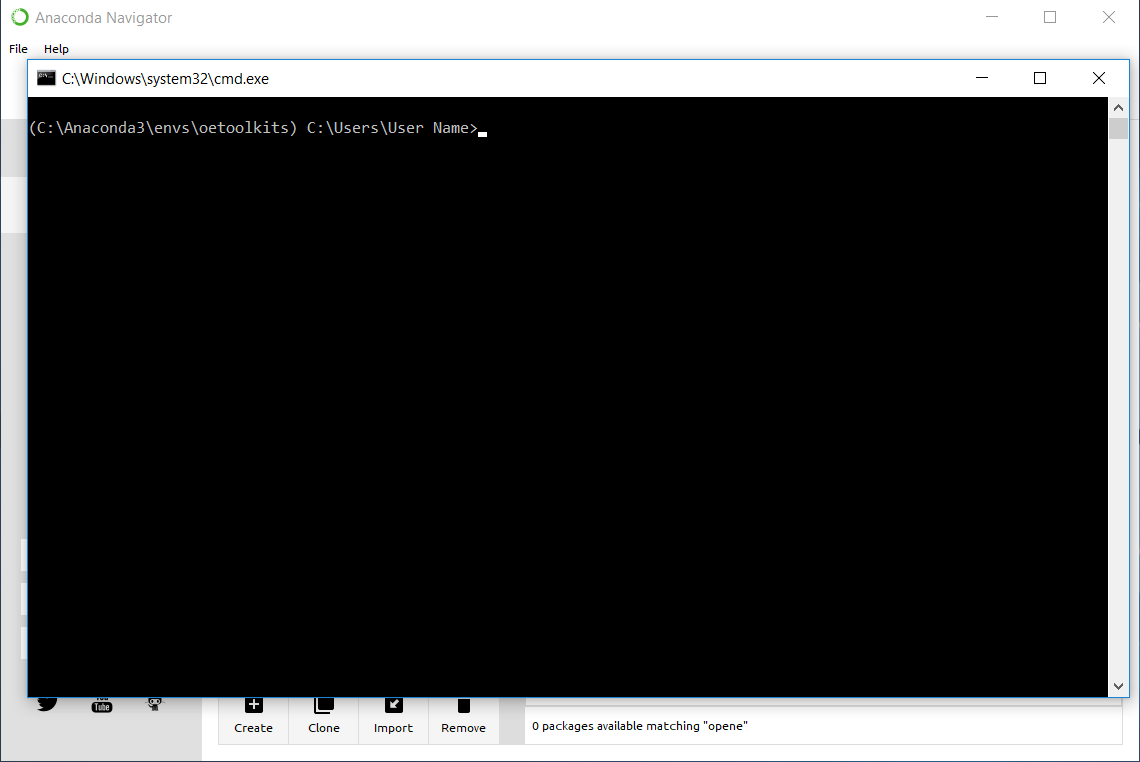

- #Anaconda prompt vs powershell how to#
- #Anaconda prompt vs powershell install#
- #Anaconda prompt vs powershell code#
This error shows that the conda environment is not being activated when you attempt to run code or start the REPL with Windows Powershell. It fails in exactly the same way as the demonstration above. However both of these WILL fail if Windows Powershell is selected as the default profile.

It will not fail if I set the basic Command Prompt as the default interpreter and then issue Python: Start REPL then import it, nor if with this same profile selected I attempt to run a module containing only this import statement. Now in VS Code, even with the environment selected as the Python environment, attempting this import fails when running in Windows Powershell. On my computer this involves simply opening a command terminal and typing C:/Users/User/anaconda3/envs/Dev38/python.exe to get into python then import PySide2 (or import sqlite3, if you prefer). This error can be easily demonstrated by running the environment's python executable in a standard windows command prompt without first activating the environment then attempting the import. Given an Anaconda environment with PySide2 (or sqlite3) installed, importing it will work so long as you activate the environment first, but fail if you do not (PySide2 import will complain about a missing DLL when attempting the nested import of shiboken2).

Value of the python.languageServer setting: Default.Relevant/affected Python-related VS Code extensions and their versions: debugging, py-coverage.Relevant/affected Python packages and their versions: PySide2, sqlite.Type of virtual environment used (N/A | venv | virtualenv | conda |.Python version (& distribution if applicable, e.g.Extension version (available under the Extensions sidebar): v2021595.open an Anaconda Prompt and run conda init powershell which will add Conda related startup to a Powershell profile.ps1 somewhere in your user’s profile.from an Administrator Powershell prompt change the Powershell Execution Policy to remote signed i.e.
#Anaconda prompt vs powershell install#
For me on an “All Users” install this is C:\ProgramData\Anaconda\Scripts add the location of conda to your PATH (if you did not add it via the installer).search for Terminal: Select Default Profile.opening the command palette ( Control-Shift-P).These two methods both worked for Anaconda 2020.02, VS Code 1.44.0, on Windows 10. py or launch a Powershell integrated terminal you should now see a message about “Loading personal and system profiles” and the Conda environment being prefixed on the terminal’s prompt. Working with Anaconda in Visual Studio Code Open an Anaconda Prompt and run conda init powershell which will add Conda related startup to a Powershell profile.ps1 somewhere in your user’s profile. For me on an “All Users” install this is C:\ProgramData\Anaconda\Scriptsįrom an Administrator Powershell prompt change the Powershell Execution Policy to remote signed i.e. Search for Terminal: Select Default ProfileĪdd the location of conda to your PATH (if you did not add it via the installer).

Opening the command palette ( Control-Shift-P) Switch VS Code to use cmd.exe as the default integrated terminal shell by: I wanted to be able to launch VS Code from any prompt (and usually the Windows menu shortcut) and still interact with Conda. I beat my head on this for far too long… launching VS Code from an Anaconda Prompt both feels clunky and didn’t really work for integrated Powershell terminals (the default VS Code integrated terminal on Windows)
#Anaconda prompt vs powershell how to#
How to solve Working with Anaconda in Visual Studio Code


 0 kommentar(er)
0 kommentar(er)
